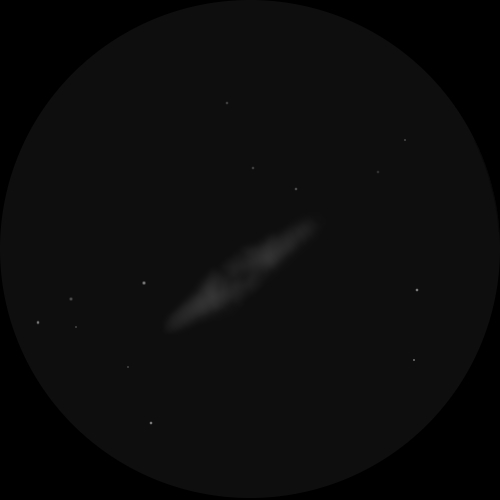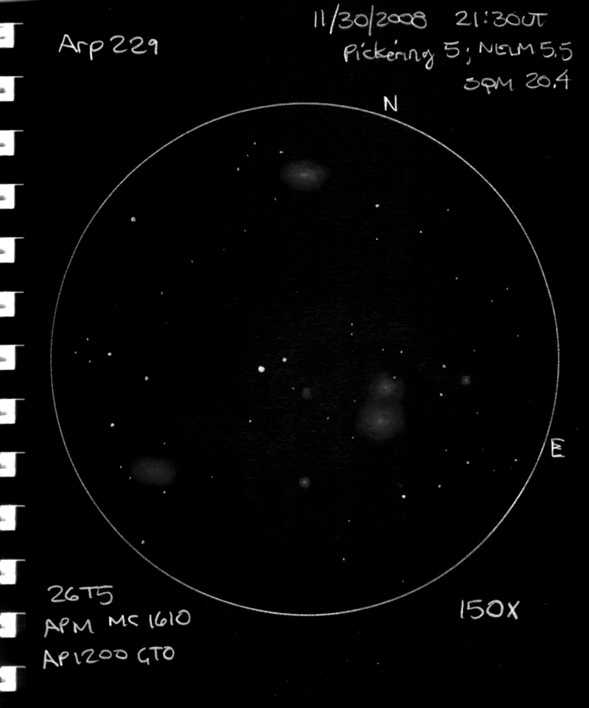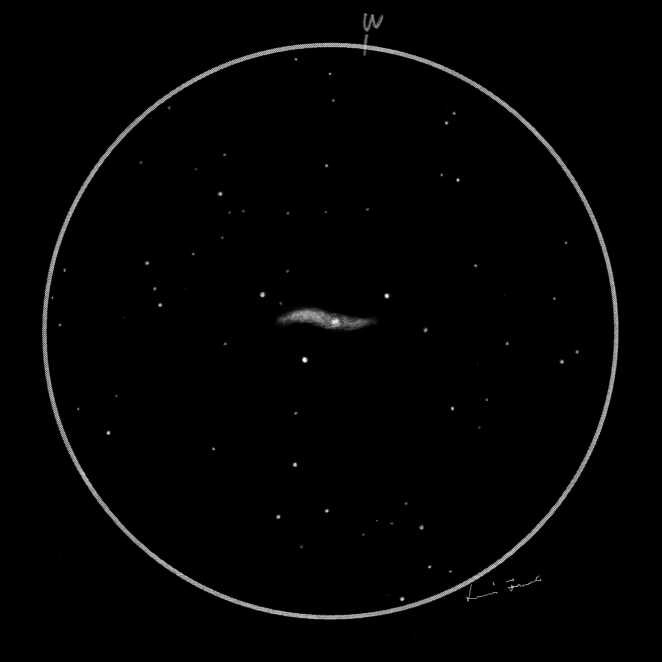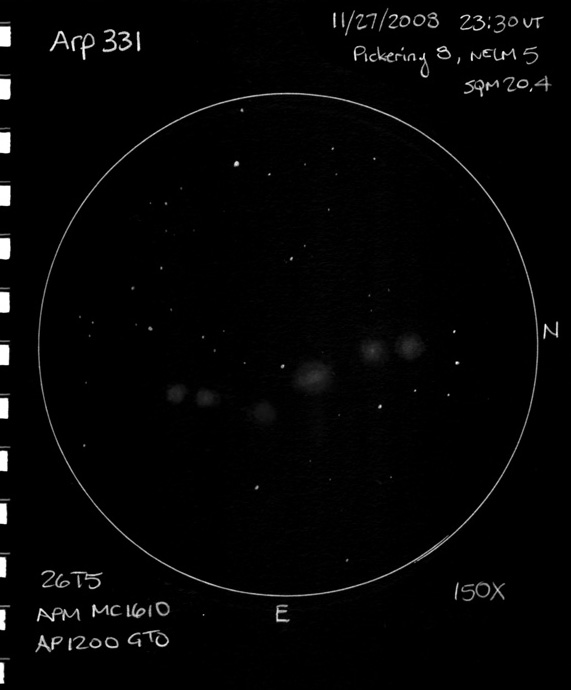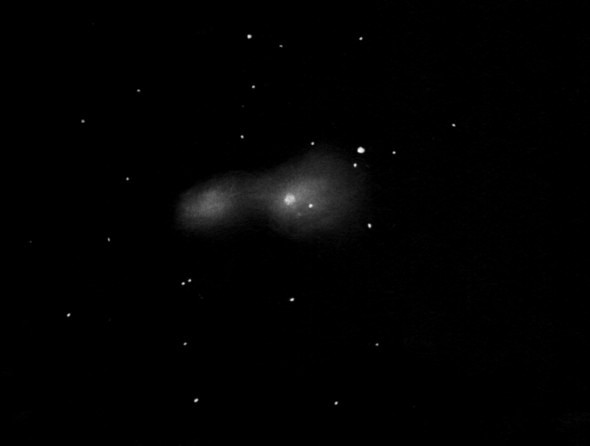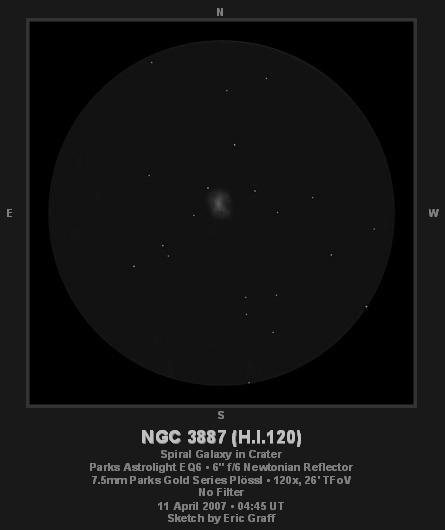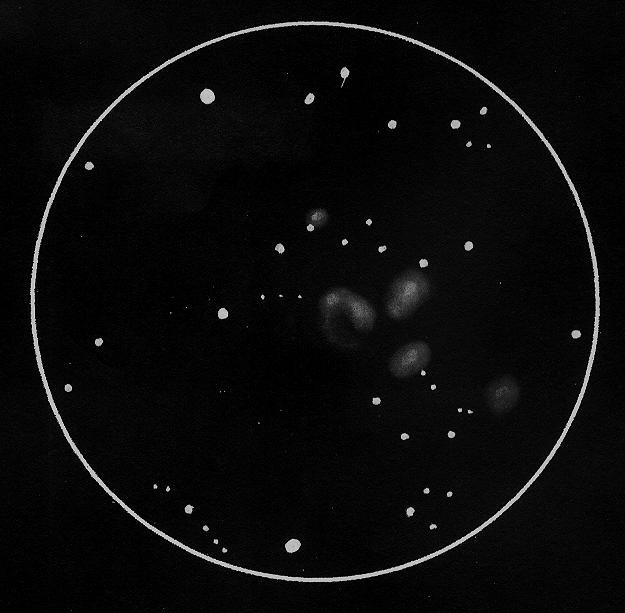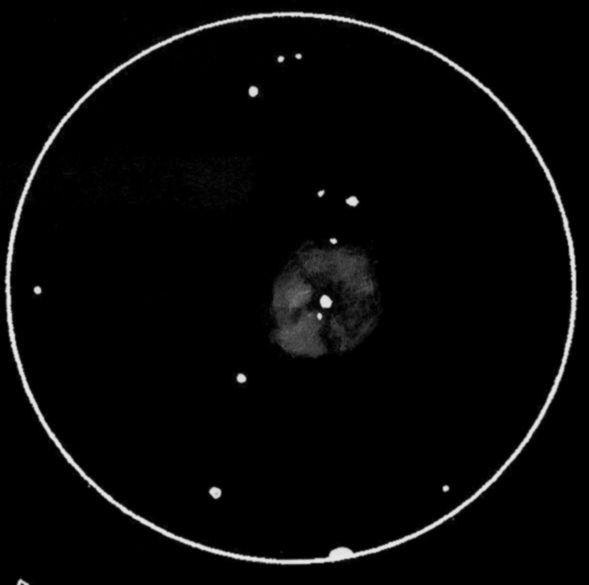
Planetary Nebula NGC 1514
Sketch and Details by Dale Holt
There is a little story behind these that I would like to share. (Frank is already aware of the situation and has been of great support). About a month ago it was brought to my attention that a fellow astronomer whom I knew, but not well had been stricken with cancer. The unfortunate gentleman was Charles Munton, it was Charles work displayed at Astro Fest in London a number of years ago that first encouraged me to begin sketching deep sky objects.
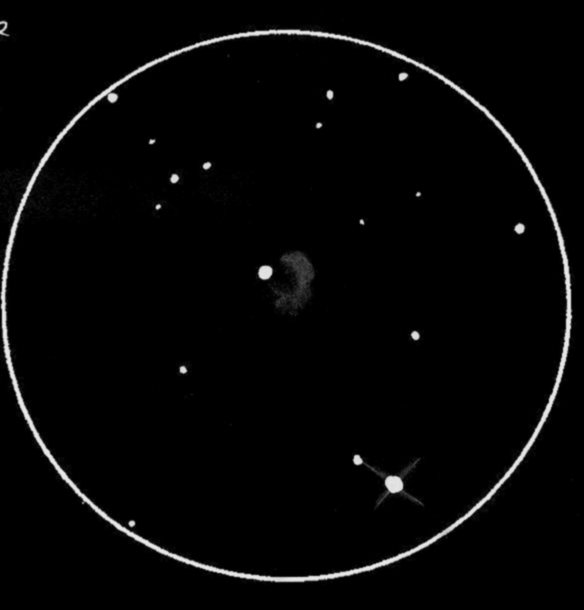
Varible Reflection Nebula NGC 1554, 1555 Hinds
Sketch and Details by Dale Holt
Charles was very ill and was spending his last days in a hospice. I came up with a plan to write to Charles each week with a summary of my observations and prints of my sketches, this I did also sending in sketches and pictures from other friends too, including Frank McCabe & Sue French. Charles was delighted to receive the packages and they appeared to do what I set out to do, keep him engaged with his passion and let him continue observation and discovery in a virtual way.
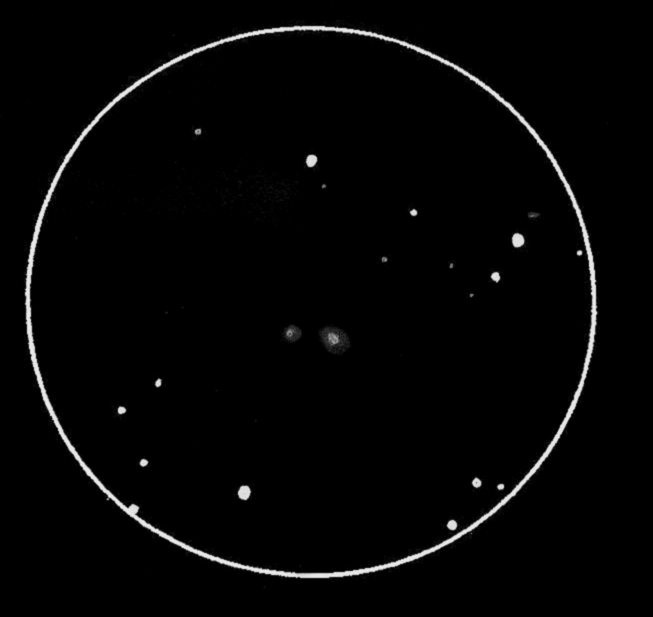
Galaxy NGC 1587 in Taurus
Sketch and Details by Dale Holt
Because I was doing this for Charles I felt compelled to get out at every clear opportunity to create sketches for him. The sketches attached were part of that program. I had just completed NGC 1514 when my phone rang in the observatory, it was Andrew Robertson a close friend and observational sparring partner to both Charles and Myself. Andrew broke the news that Charles had gone!
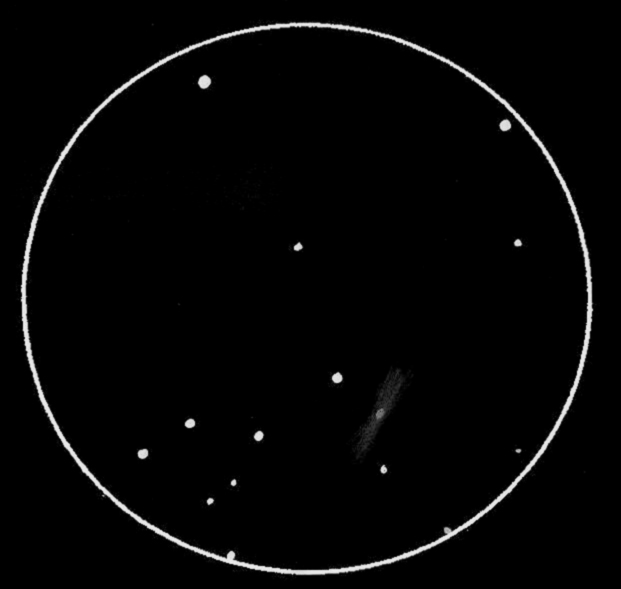
Galaxy NGC 1589
Sketch and Details by Dale Holt
These are pictures for Charles that sadly he will never see.
As usual they were created using my 14″ f5 Newtonian running a Watec 120n Deep Sky Video camera, sketches made in real time from a black & white monitor using HB pencils, blending stumps and erasers on cartridge paper. Finished sketches then scanned and turned into negative images electronically.
Dale Holt
Chippingdale Observatory
Hertfordshire
England
